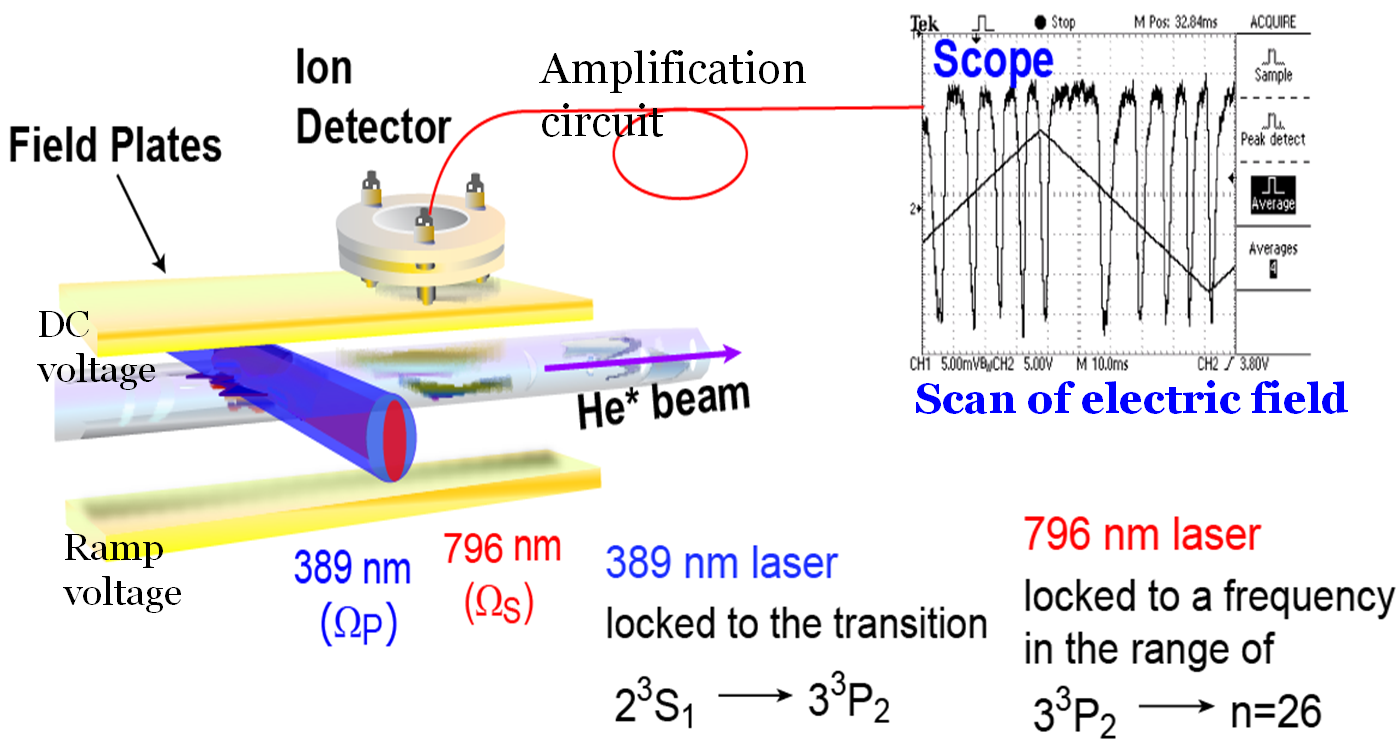Stimulated Rapid Adiabatic Passage for Metastable Helium Atoms
The original purpose of this experiment was to seek a method of focusing metastable helium atoms to a really tiny spot and then perform neutral atom lithography. Since Rydberg atoms have a large electric dipole moment and a long lifetime, it is easy to focus them via an electric lens. STIRAP is used to have 100 percent efficiency from the transfer between the metastable ground state and the Rydberg state. The method of bichromatic force could be applied to make a really bright metastable helium beam, which is analogous to that of a parallel incoming light, henceforth the focusing point would be very small.

The current experiment is the measurement of the absolute efficieny of Rydberg atom production by STIRAP. We populate the n=24 Rydberg state via the intermediate 3p triplet state by a sequence of two lasers at ~796nm and ~389nm separately in the counter-intuitive order as suggested by STIRAP. The experiment setup is shown in the above diagram. We use CW lasers and let the atom pass through them, hence as seen by the atom there are two laser pulses. A static electric field is applied so the atom experiences a stark shift. The frequency of the laser is fixed such that when we scan the electric field Rydberg atoms are produced once the energy conservation is satisfied at a certain stark shifted position. We detect the Rydberg atoms by the ion signal, since the Rydberg atoms are easily ionized.

To measure the efficiency we apply a third laser beam, namely the ~1083nm wavelength corresponding to the 2p transition. This laser beam will effectively push the atoms which are still in the metastable ground state but leave the Rydberg atoms unaffected. Therefore we acquire a physical separation between them, and we can measure the efficiency. To make this physical separation significant, either the curved wavefront method or the bichromatic force method of the ~1083nm light can be used. For a schematic diagram of the experiment please refer to the above diagram.
We have reached some very interesting observations from this experiment. The STIRAP method has not achieved the 100 percent efficiency for the n=24 Rydberg atom production, but rather much lower. We are trying to discover the new physics lying behind that.
For the details of this research, please refer to the poster we presented at DAMOP 2010 here, and a recent talk given during the summer 2010 at University of Science & Technology of China and Shanghai Institute of Optics and Fine Mechanics here.



